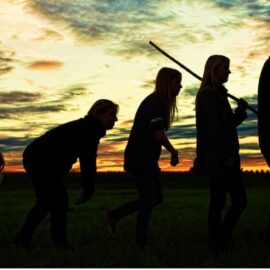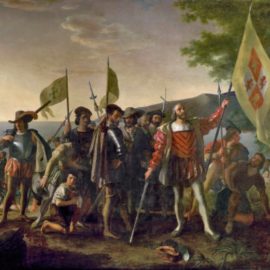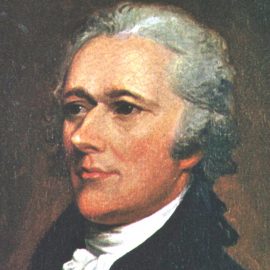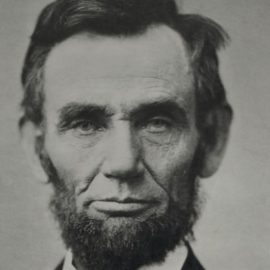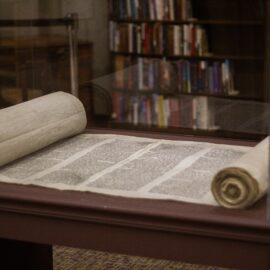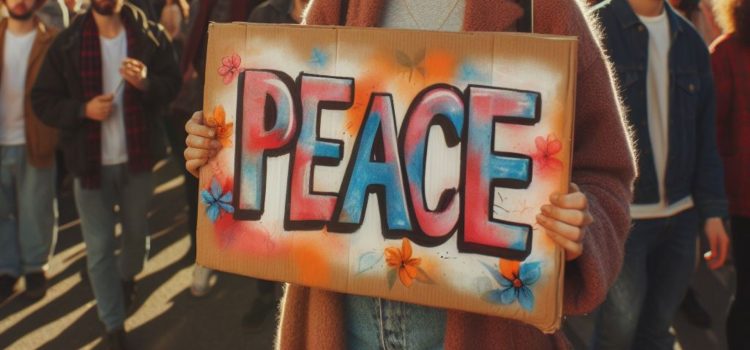
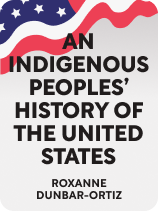
This article is an excerpt from the Shortform book guide to "An Indigenous Peoples' History of the United States" by Roxanne Dunbar-Ortiz. Shortform has the world's best summaries and analyses of books you should be reading.
Like this article? Sign up for a free trial here.
What were the key features of the indigenous civil rights movement in the US? What did Native activists accomplish in the 1960s?
The indigenous civil rights movement sought to achieve self-governance, treaty enforcement, and land restitution for Native Americans. The movement has had many long-term impacts still seen today.
Read on for more about Native American activism during the civil rights era.
Native American Mobilization During the Civil Rights Era
The US’s attempt to urbanize Native American youth had unintended consequences—many of these relocated youth were poor and therefore more amenable to radicalization, and living in cities increased their exposure to the civil rights movement of the 1960s. Thus, Native American resistance efforts exploded during the civil rights era. The indigenous civil rights movement focused on restoring three basic native rights: the right to self-governance, the right to enforce treaties between the US and native nations, and the right to land restitution. Native activists also joined multicultural coalitions fighting for the rights of all oppressed people of color, like Martin Luther King Jr.’s Poor People’s Campaign.
(Shortform note: The civil rights movement began in the 1950s in protest of systemic racism, especially Jim Crow laws. But the movement wasn’t limited to anti-Black racism; urbanized native youth joined the struggle, possibly because their experience of poverty exacerbated feelings of injustice and grievance. In The Autobiography of Malcolm X, civil rights activist Malcolm X explains why multicultural coalitions such as the Poor People’s Campaign (which aimed to redress economic inequality) and Fred Hampton’s Rainbow Coalition (which united socialists of all races, including Native Americans) gained steam during the movement: People of color across the globe could trace their struggles to a single source—white colonialists and imperialists.)
Some efforts to win back the rights and lands of Native Americans were successful—for example, Pueblo peoples won the return of Blue Lake, which was sacred to them, from the state of New Mexico. Others succeeded only in part. For example, beginning in 1969, native activists occupied Alcatraz Island for a year and a half, demanding that institutions that would support Native American life be built there. That didn’t happen, but afterward, the indigenous professors founded a Native American college called D-Q and a new Native American studies program at the University of California.
(Shortform note: To secure Blue Lake, the Pueblo appealed to the First Amendment of the US Constitution, arguing that since the lake was sacred to them, restricted access to the lake infringed on their fundamental rights as citizens to freedom of religion. Experts explain that activists zeroed in on Alcatraz Island (which is most famously known as the location of a prison that housed notorious criminals like Al Capone) because of its historic importance to indigenous peoples, including refugees of the Californian missions. The Alcatraz occupation spurred long-lasting changes to higher education: Although D-Q closed in 2005, there are now 32 tribal colleges and universities, and many US colleges offer Native American studies programs.)
Indigenous activism inspired by the civil rights movement also had a long-term, global cultural impact, citing two notable examples. First, as part of a 1972 protest called the Trail of Broken Treaties, activists broke into the Bureau of Indian Affairs (BIA) and stole federal documents proving US mistreatment of Native Americans. The activists presented their findings to the United Nations (UN), which eventually led the UN to release a Declaration of the Rights of Indigenous Peoples in 2007.
(Shortform note: According to some sources, the activists didn’t originally plan to break into the BIA. They intended to visit reservations across the country, learn more about their needs, and present a list of demands to both the US presidential candidates of the year. However, once they reached Washington, D.C., they were denied access to the candidates—partly because of the BIA’s interference. Frustrated, they broke in and occupied the BIA. Instead of publicizing the activists’ demands, the press focused on the occupation and acts of vandalism the activists committed. (Researchers have found that it’s common for the press to lose sight of protestors’ messages and focus on their methods instead.) That may partially explain the 35-year delay in the UN’s Declaration.)
Second, in 1973, activists occupied Wounded Knee (where a massacre of Sioux people had taken place in 1890, as we discussed earlier). News coverage of the event educated the American public about the 1890 massacre there and likened the massacre to the My Lai massacre of 1968 (a war crime the US committed in Vietnam). As a result, the American public knew more about the US’s history of imperialist violence against indigenous peoples—in both the Americas and abroad.
(Shortform note: Experts note that 20 US soldiers who contributed to the massacre at Wounded Knee received Medals of Honor for their participation. In 2019, activists and lawmakers began advocating for the rescindment of these medals. They compared it with the massacre at My Lai, noting that those perpetrators didn’t receive awards—several were charged with war crimes (though only one was convicted). That legislation failed, but paths toward rescindment are still being explored. Some experts believe the massacres at Wounded Knee and My Lai have the same roots—they contend that the US’s involvement in the Vietnam War can be attributed to US support of French colonialism and US imperialist military policies.)

———End of Preview———
Like what you just read? Read the rest of the world's best book summary and analysis of Roxanne Dunbar-Ortiz's "An Indigenous Peoples' History of the United States" at Shortform.
Here's what you'll find in our full An Indigenous Peoples' History of the United States summary:
- A retelling of US history from a Native American perspective
- What led Europe to colonize the Americas
- How patterns of genocide and resistance have played out over the course of US history


